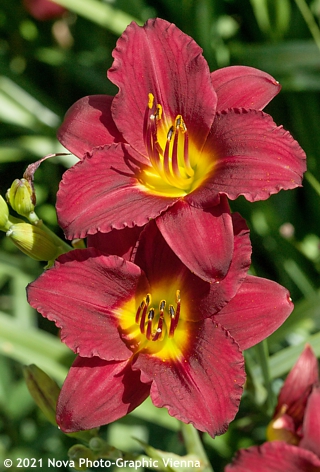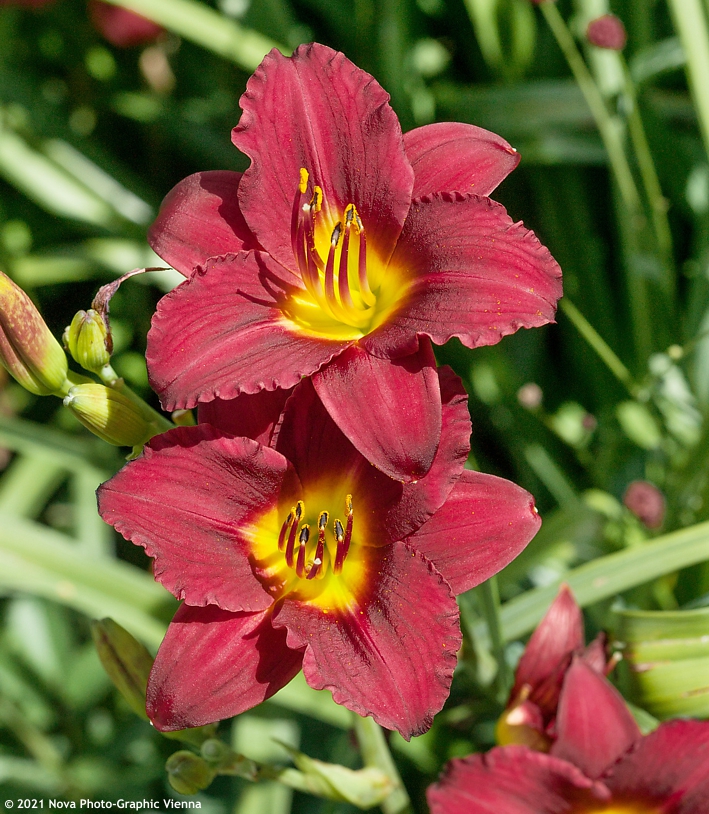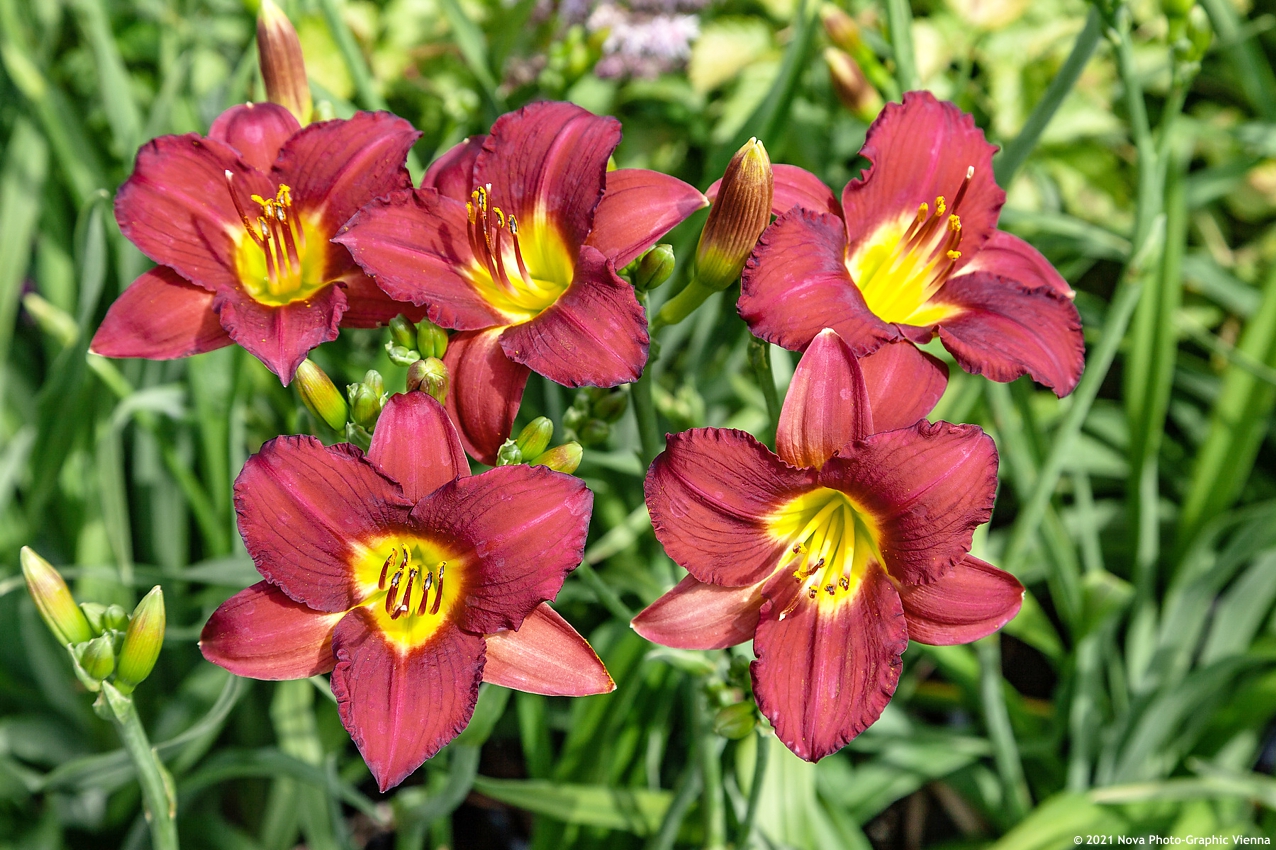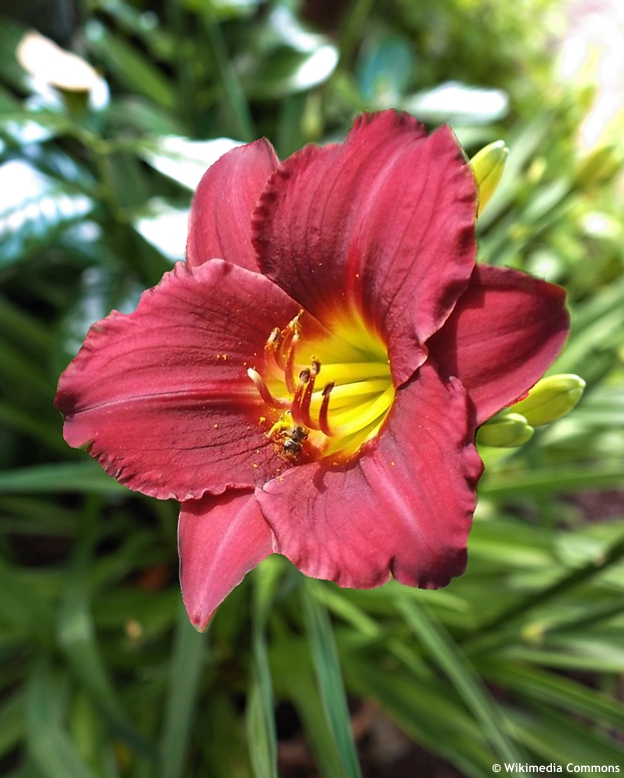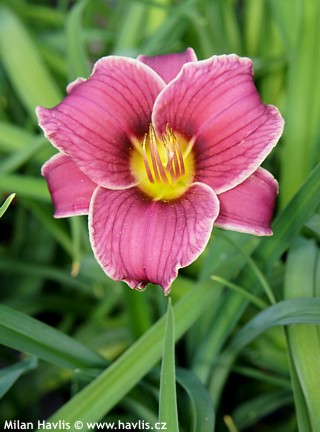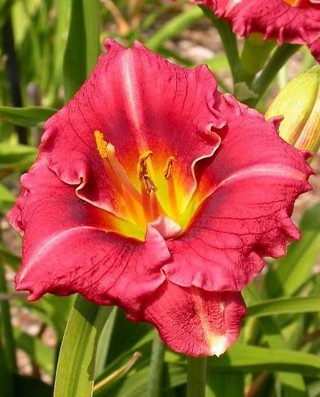Hemerocallis 'RUBY STELLA' daylily
size/type
low perennial,mid-sized perennial
usual height
0,3-0,4m
usual width
0,3-0,5m
leaves
deciduous broadleaf
colour of leaves
flowers
showy
colour of flowers
blooming time
July-September
location
full to partial sun
soil type
any (acidic to alkaline)
USDA zone (lowest)
3 (down to -40°C)
winter protection
for zone 5+6

for zone 7

categorized
Hemerocallis
Daylilies are flowering queens for one day. Each bloom lasts a day but there is no need to worry – every stem bears more blooms and as the plants grow older they have numerous stems each. This low-maintenance perennial is a miracle for those who have limited time to spend looking after their gardens because apart from occasional watering on hot and dry summer day it needs ABSOLUTELY NOTHING. And still it can leave us gazing at their beautiful, lily-like blooms of every possible colour you can think of (except for blue and black).Description of the plant:
Ruby Stella is one of the very few daylilies that reliably bloom almost all summer long. Its flowers are 8-9 cm across, broadly funnel-shaped, ruby red with a bright yellow throat, open wide, and appear in profusion from about mid-July until September atop thin, 30-40 cm tall, slightly arching stems until early autumn. The leaves are narrower compared to other hybrids, medium green, deciduous, and form a dense clump.It was found by Leo Berbee in his Dutch nursery in Lisse, the Netherlands, in 1992. Even though he has nothing in common with the previous re-blooming Stella daylily – Stella de Oro that was bred by Walter Jablonski and introduced in 1975, he decided to keep the word in his discovery making it clear that Ruby Stella could well be a very close relative with its prolonged flowering period and narrow leaves. He applied for a patent in 2004 but that was abandoned a year after and never granted.
The leaves are deep green, strong and healthy. They appear early in the spring and persist until winter unlike spring bulbs whose leaves wither away after flowering. Apart from occasional slug attack there are no pests or diseases they would suffer from. Put your day lilies on a sunny spot and fertilize it for better flowering every spring, if you want to. It tolerates all types of soil, preferably it likes moist soil. Extremely hardy to -40°C (USDA zone 3).
Last update 15-11-2021
QUICK PRICE OVERVIEW
CURRENTLY SOLD OUT
WANT TO TRY A SIMILAR PLANT?












